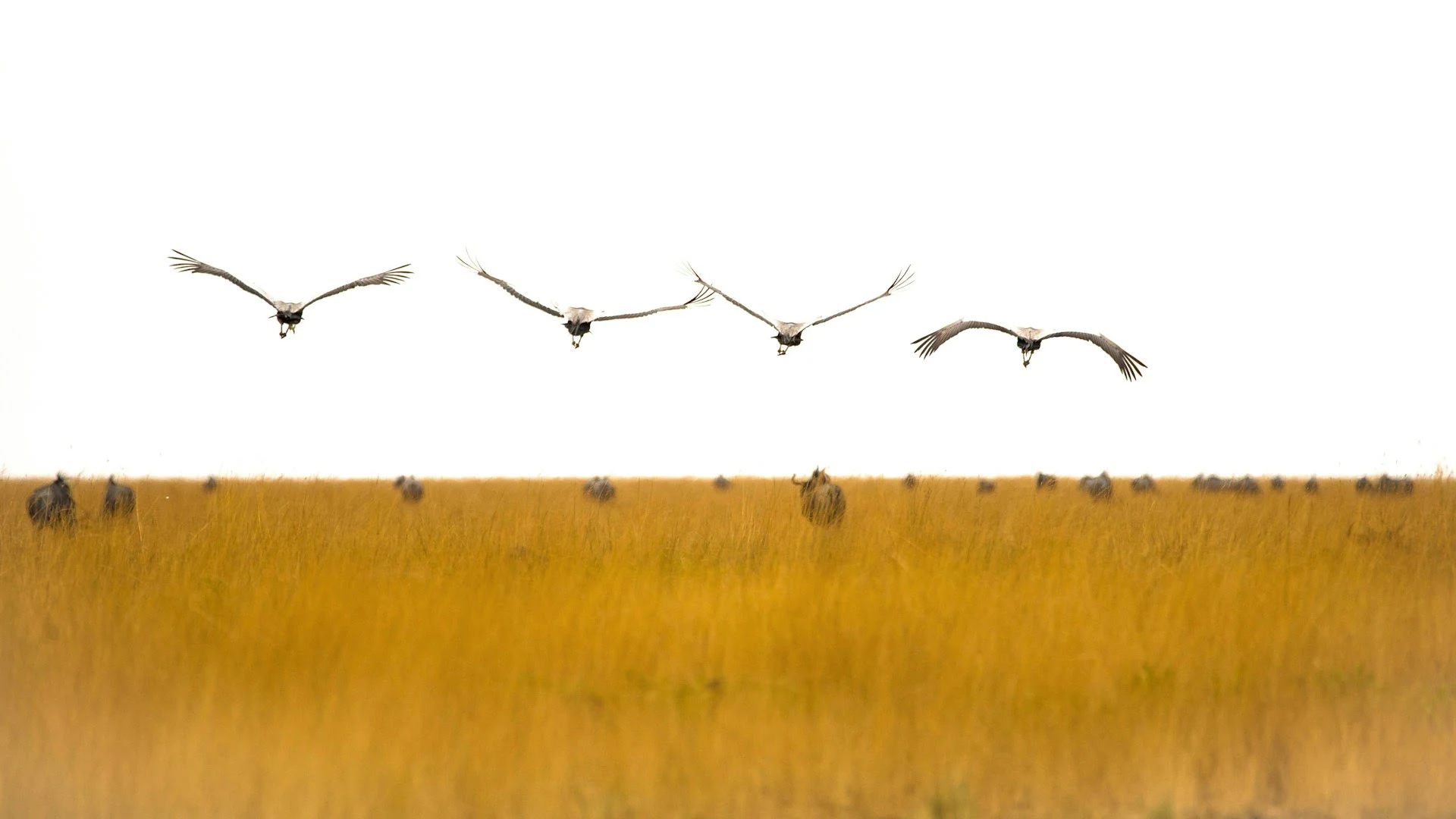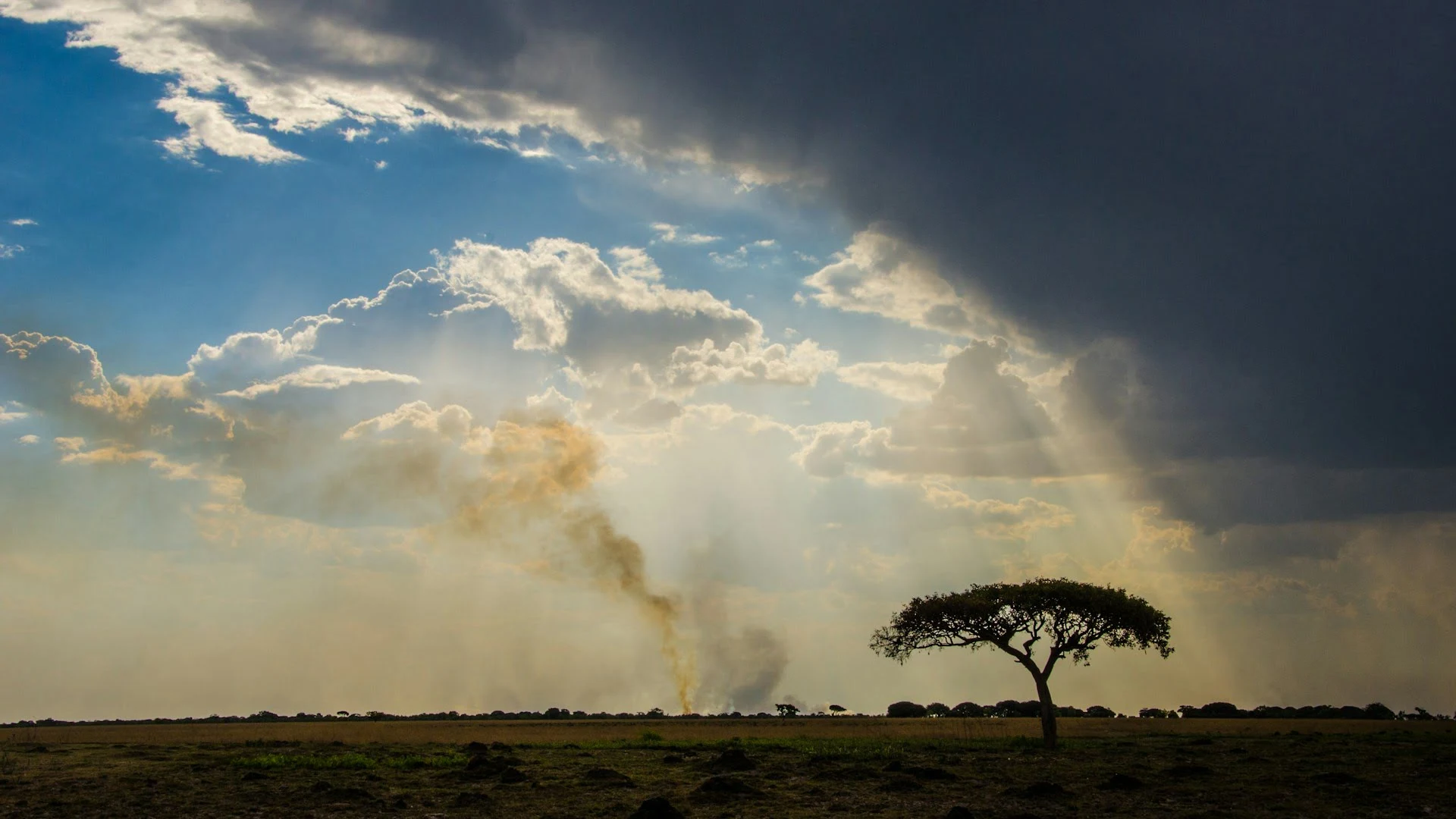Lower Zambezi National Park
About Lower Zambezi
The Lower Zambezi National Park sits along the Zambezi River in Zambia. This vast park remained untouched until 1983 when it became a national park, allowing the lands to stay wild.
The park stretches across the floodplains of the Zambezi River, encircled by tall mountains. Across the river is Zimbabwe’s Mana Pools National Park, together forming a UNESCO-designated area.
The scenery transitions from Miombo woodlands near the mountains, to Mopane woodlands closer to the river, with open grassy floodplains along the banks. Animals roam freely throughout this remote, roadless area.
The floodplains attract large herds including elephants, buffalo, lions, leopards, antelopes, crocodiles and hippos. The rare African wild dog can sometimes be spotted. Over 378 bird species inhabit the varied habitats.
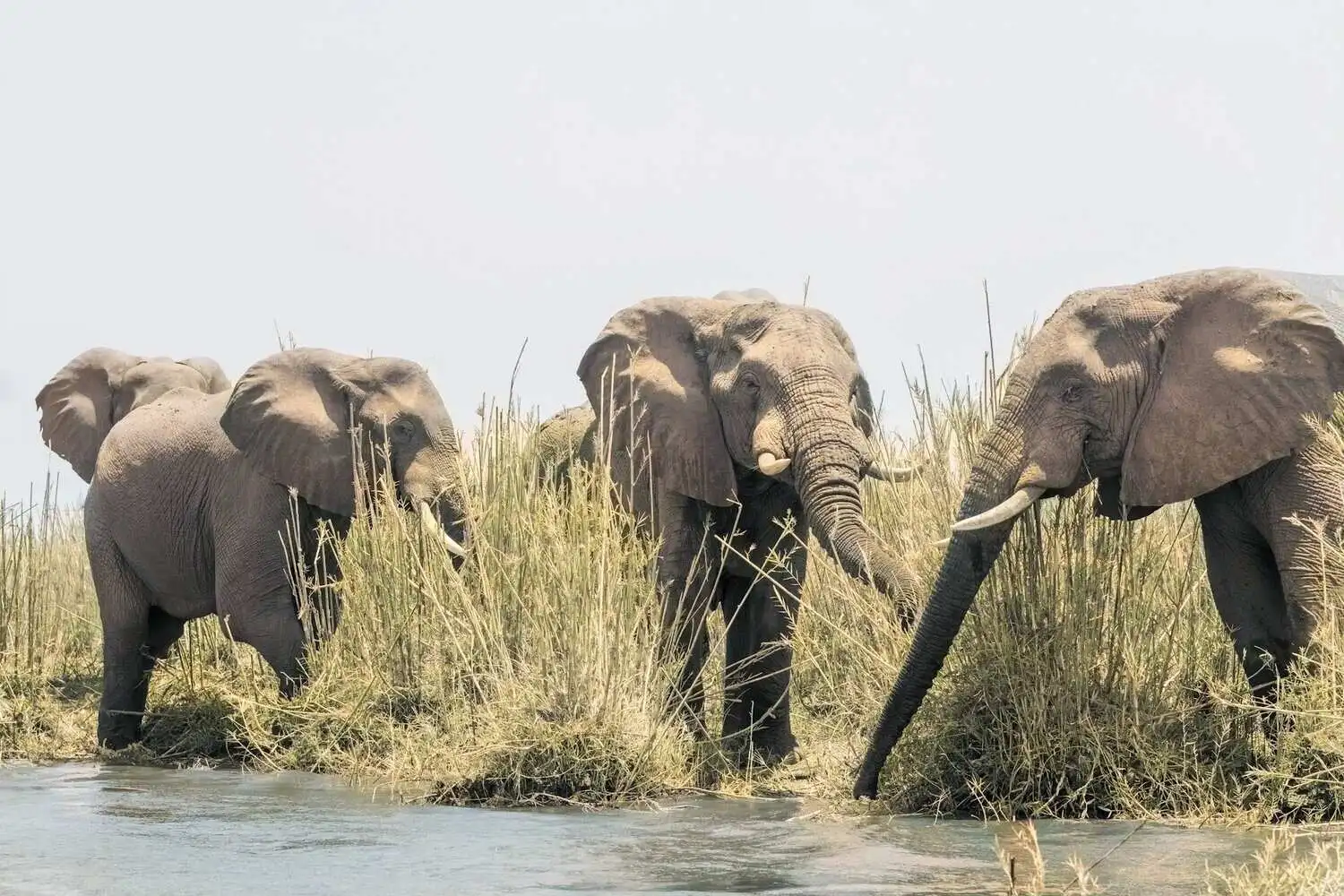
Lower Zambezi Safari Tours
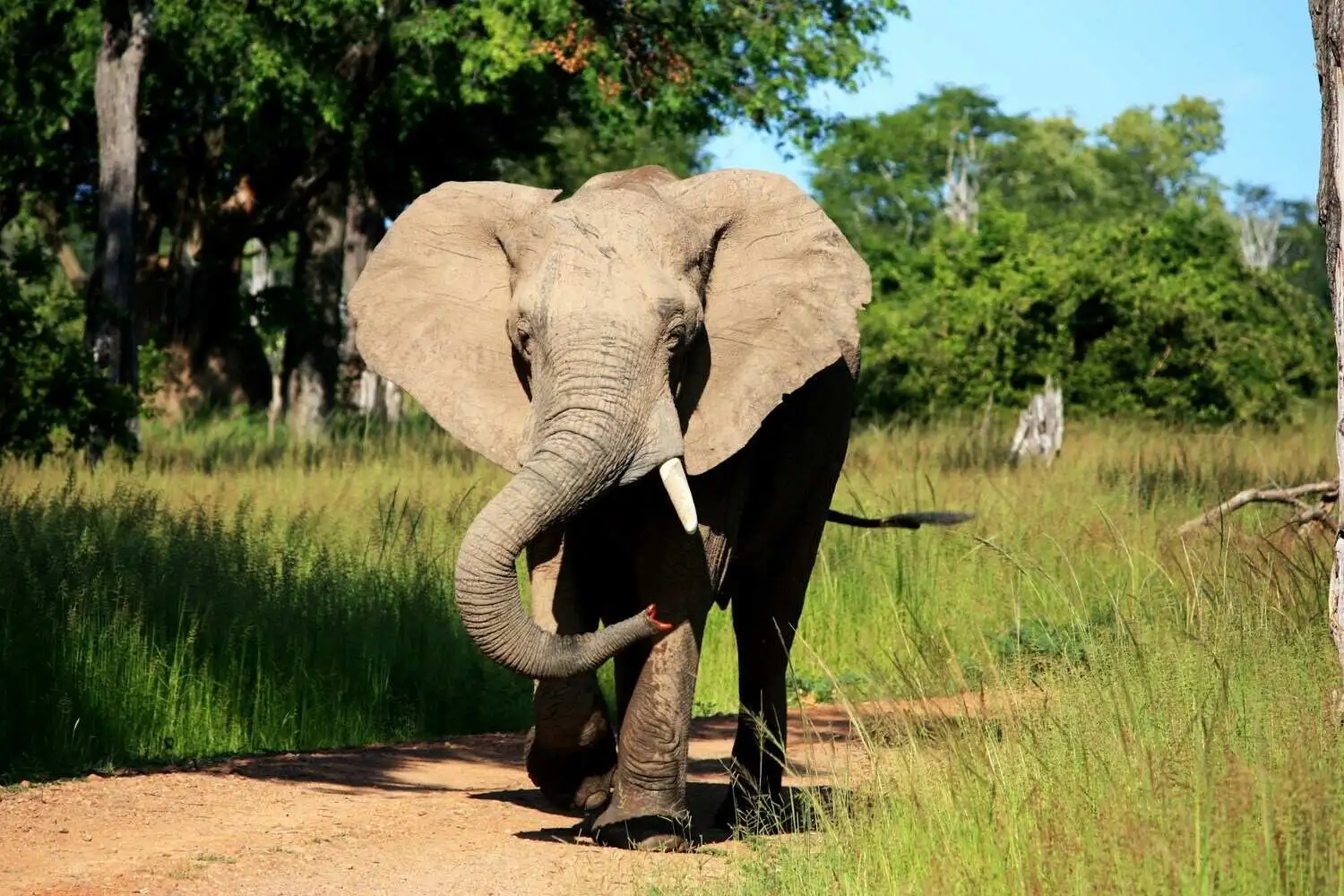
7 Days
Lower Zambezi & Kafue Safari

4 Days
Lower Zambezi Last Minute Safari
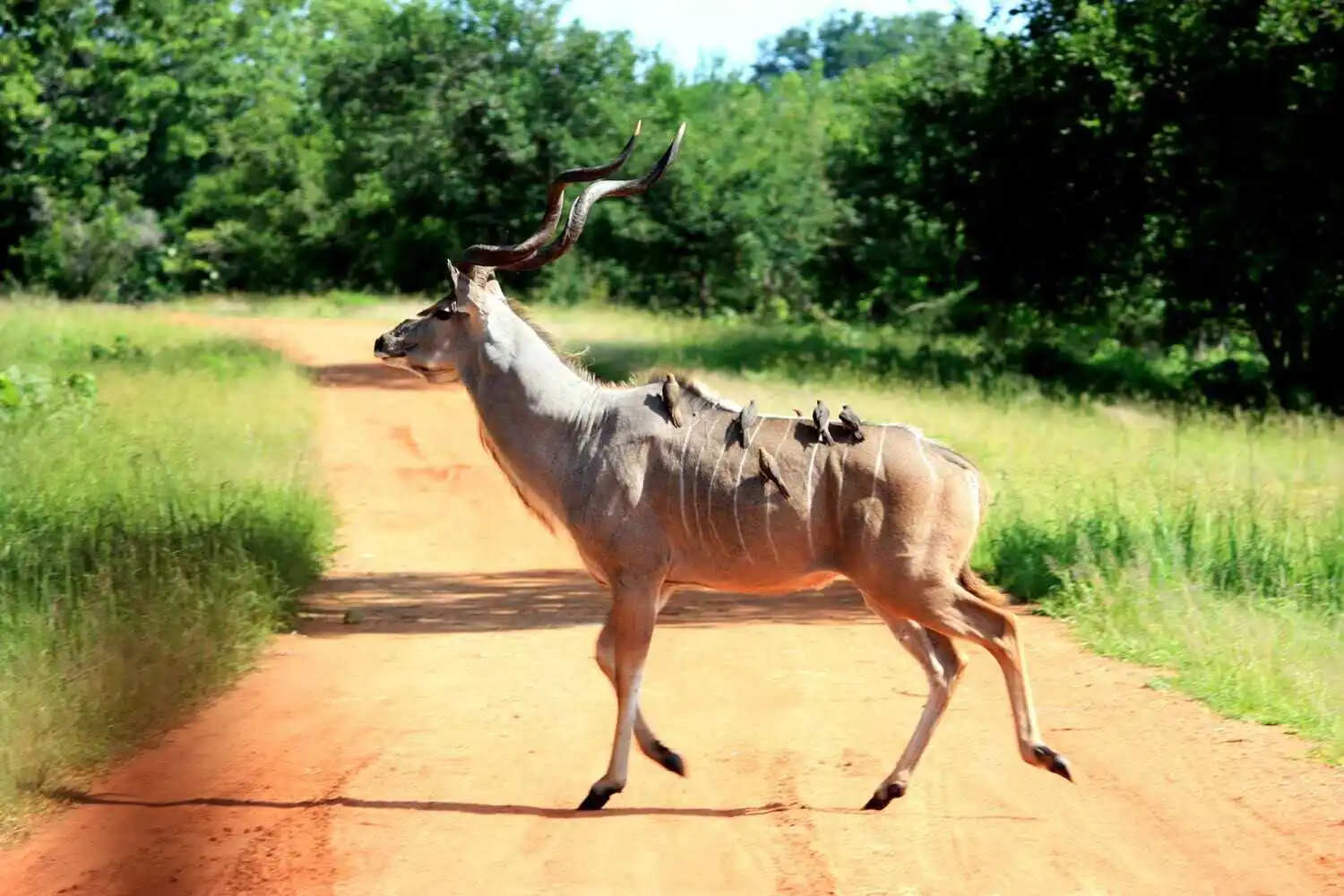
4 Days
Lower Zambezi Safari
Wildlife in Lower Zambezi National Park

Lots of cool animals roam Lower Zambezi Park. On the open grassy areas by the river, you’ll see huge animal herds.
Elephant families wander around eating trees and bushes. Look for little baby elephants too! Big buffalo herds graze on the green grasses after rains.
This park has fierce lions and leopards hunting for food. You may even spot the very rare african wild dogs.
Different antelopes live here like the tall kudu and the shaggy roan antelope.
In the Zambezi River are giant crocodiles and funny-looking hippos that come out to eat grass.
For bird watchers, there are over 378 bird types like the big fish eagle.
From massive elephants to tiny colored birds, so many amazing animals call Lower Zambezi home.

Mammals
- African Bush Elephant
- Hippopotamus
- African Buffalo
- Lion
- Leopard
- Spotted Hyena
- Waterbuck
- Zebra
- Impala
- Puku
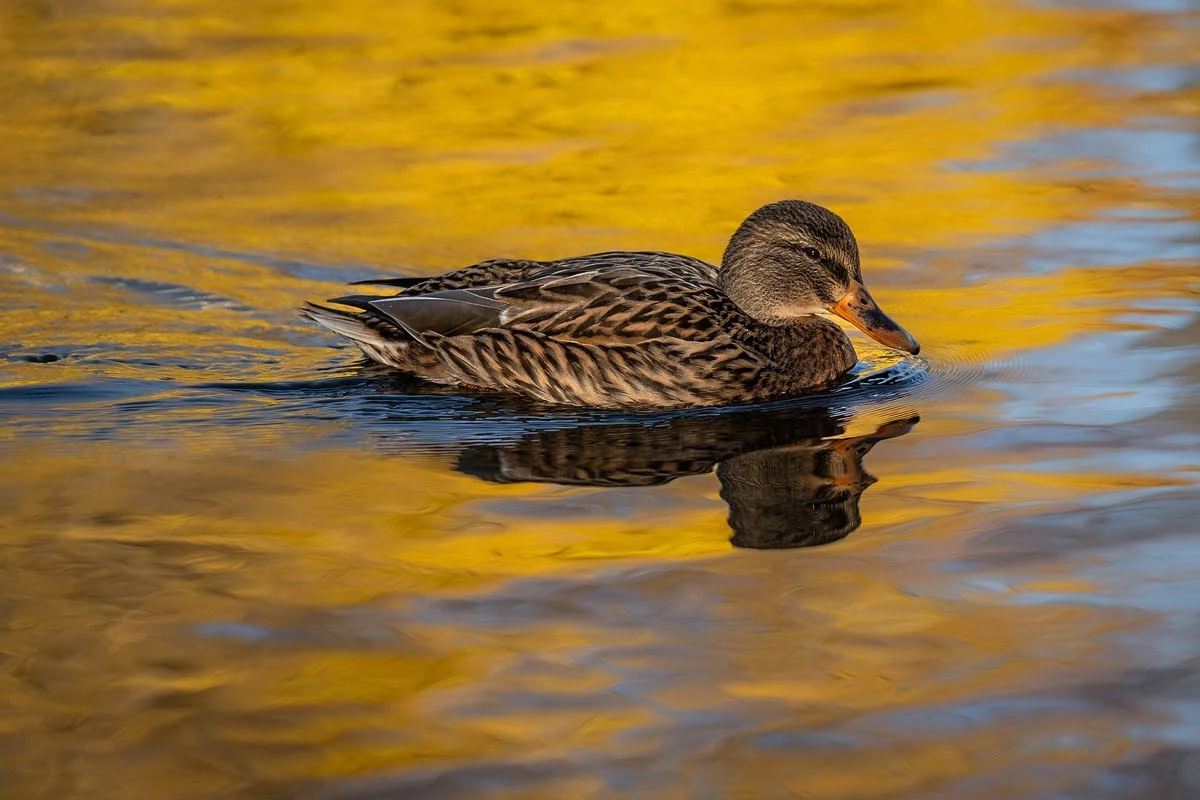
Birds
- African Fish Eagle
- Saddle-billed Stork
- African Jacana
- Carmine Bee-eater
- Schalow’s Turaco
- African Skimmer
- Bateleur
- Martial Eagle
- Hammerkop
- Brown-chested Helmet-shrike

Reptiles
- Nile Crocodile
- Monitor Lizard
- African Rock Python
- Puff Adder
- Boomslang
- African House Snake
- Helmeted Terrapin
- African Softshell Turtle
- African Egg-eating Snake
- Zebra Skink
Best Time to Visit Lower Zambezi National Park
The best season to go to Lower Zambezi Park is the dry time of year. This runs from May through October.
During the dry months, it is easier to spot animals. They gather around waterholes and the Zambezi River to drink. The bush is less green and thick, so wildlife is more visible. The lands dry up making it ideal for safari drives and walking safaris too. You can explore without getting stuck in mud!
From July to October is peak season when the weather is warmest and driest. This is premium viewing time, but also more crowded. May, June and early July are great shouldet season months to visit. It’s dry but fewer tourists and a little cooler.
No matter when you go in the dry season, you’ll have excellent chances to see elephants, lions, leopards, antelopes and many other amazing creatures!

Prime Times for Lower Zambezi’s Natural Events
Arrival of Migratory Birds
(September to October)
Various migratory bird species like Eurasian bee-eaters, Eurasian golden orioles, and European rollers arrive in Lower Zambezi, gracing the region with their presence and calls.
Predator action at waterholes
(June to August)
With limited water sources, predators like lions, leopards, and wild dogs stake out waterholes, increasing the chances of witnessing dramatic hunting scenes.
Elephant nursery herds
(April to May)
Large herds of female elephants with their young calves can be seen gathering near water sources during the early dry season.
Carmine bee-eaters nesting
(September to October)
The striking carmine bee-eaters arrive in large colonies to nest in riverbanks, creating a spectacular display of their vibrant red plumage.
Thunder and dramatic skies
(January to March)
The summer rains bring impressive thunderstorms, creating dramatic cloud formations and vibrant sunsets over the Zambezi River and surrounding landscapes.
Impala lambing season
(November to December)
Female impala give birth to lanky calves, which must quickly learn to keep up with the herd, often attracting the attention of predators.
Lower Zambezi’s Climate
Lower Zambezi Park has two main seasons – wet and dry. The dry season is from May to October. This is the most popular time to visit. Days are sunny with hardly any rain. Average temperatures are warm, around 77°F (25°C).
From November to April is the wet season. It rains a lot during these months, with around 31 inches (787mm) of rainfall in total. The air is humid and muggy. Average highs are about 88°F (31°C).
The wettest months are December to February when heavy downpours happen often. Roads can get flooded and impassable.
Note : No matter when you visit, always be prepared for the Zambezi heat! Drink lots of water and wear lightweight, breathable clothing. The mornings and evenings can feel cool too.
Climate Chart of Lower Zambezi National Park
| Month | Jan | Feb | Mar | Apr | May | Jun | Jul | Aug | Sep | Oct | Nov | Dec |
|---|---|---|---|---|---|---|---|---|---|---|---|---|
| Min (°C) | 18 | 19 | 20 | 19 | 17 | 15 | 14 | 15 | 17 | 20 | 21 | 19 |
| Max (°C) | 30 | 31 | 32 | 32 | 31 | 29 | 28 | 29 | 32 | 34 | 33 | 31 |
How to Reach Zambia
Reaching Zambia is easy, with several international airports to choose from. The main airports are Kenneth Kaunda International Airport (LUN) in Lusaka, Harry Mwaanga Nkumbula International Airport (LVI) in Livingstone, and Simon Mwansa Kapwepwe International Airport (NLA) in Ndola.
Many reputable airlines fly to Zambia, including Emirates, Ethiopian Airlines, Kenya Airways, South African Airways, RwandAir, Qatar Airways, Turkish Airlines, and KLM Royal Dutch Airlines. These airlines connect Zambia to major cities around the world.
Travelers from Europe, the Americas, and other regions can find convenient connections to Zambia through major hubs like Dubai, Addis Ababa, Nairobi, Johannesburg, and more. Direct flights from some cities are also available, making it simpler to reach this amazing destination in Southern Africa.
Getting to Lower Zambezi
Lower Zambezi National Park is a premier safari destination in Zambia. To start your journey, most travelers fly into Lusaka’s main airport. From Lusaka, you can reach Lower Zambezi by taking a domestic flight to a nearby airstrip or by enjoying a scenic road trip followed by a short drive to the park.
Consider the season when planning your visit, as wildlife experiences vary throughout the year. Lower Zambezi’s location also makes it easy to combine with other top safari destinations in Zambia and neighboring countries for an extended adventure.
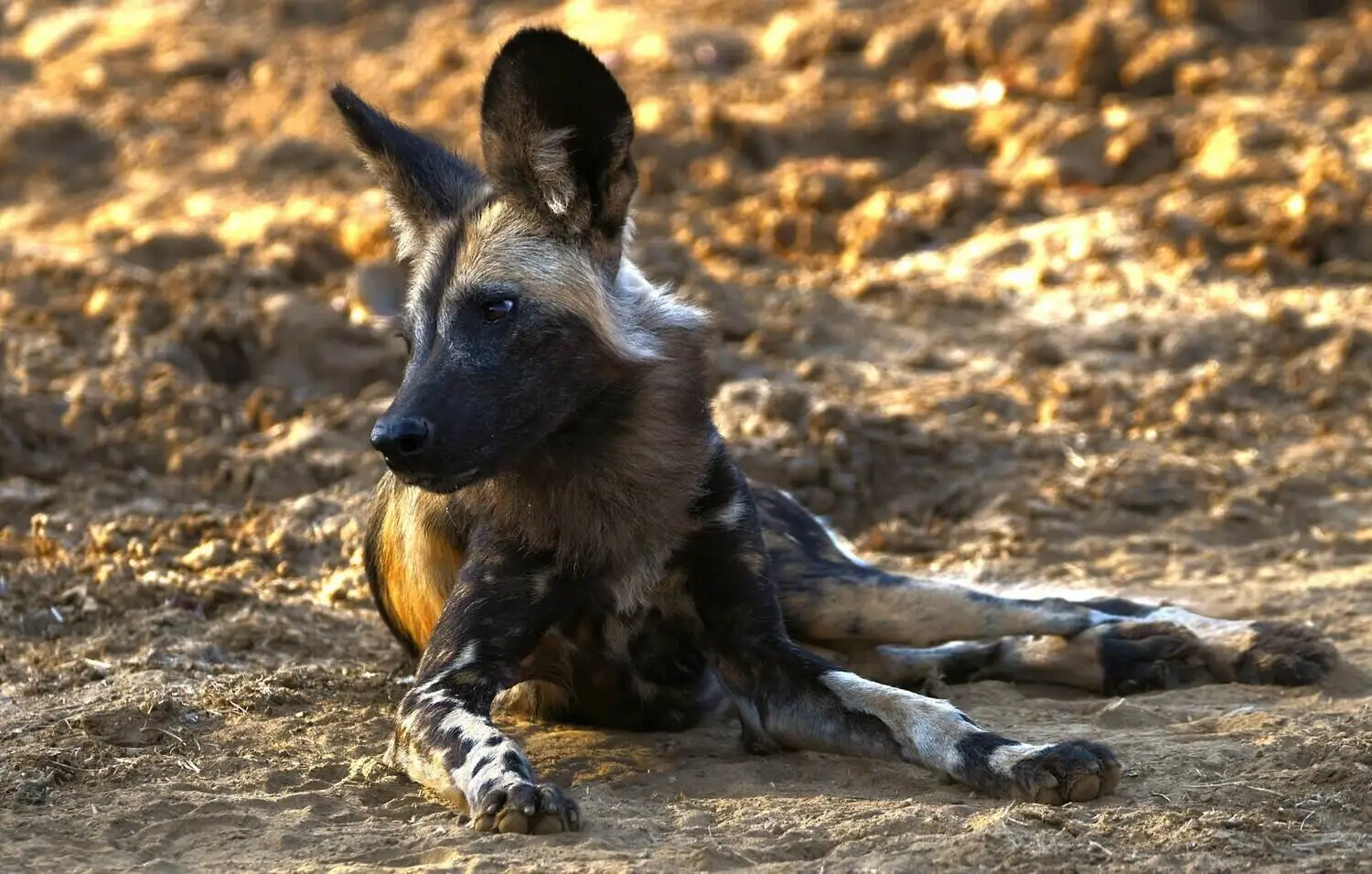

By Air
If you fly into Zambia, the closest airport to Lower Zambezi is at Jeki, a small airstrip right inside the national park. Small planes and charters frequently fly here from Lusaka and other cities.
From Jeki airstrip, it’s just a short drive to your safari lodge or camp in the park.

By Road
If driving from Lusaka, take the Great East Road towards Chirundu at the Zimbabwe border. After around 4 hours, turn off onto the M39 highway heading south.
This road will take you straight to one of the park gates at Chongwe. The drive is around 6-7 hours total from Lusaka.
Ready for an adventure along the Zambezi River? Plan your trip to Lower Zambezi National Park today!

